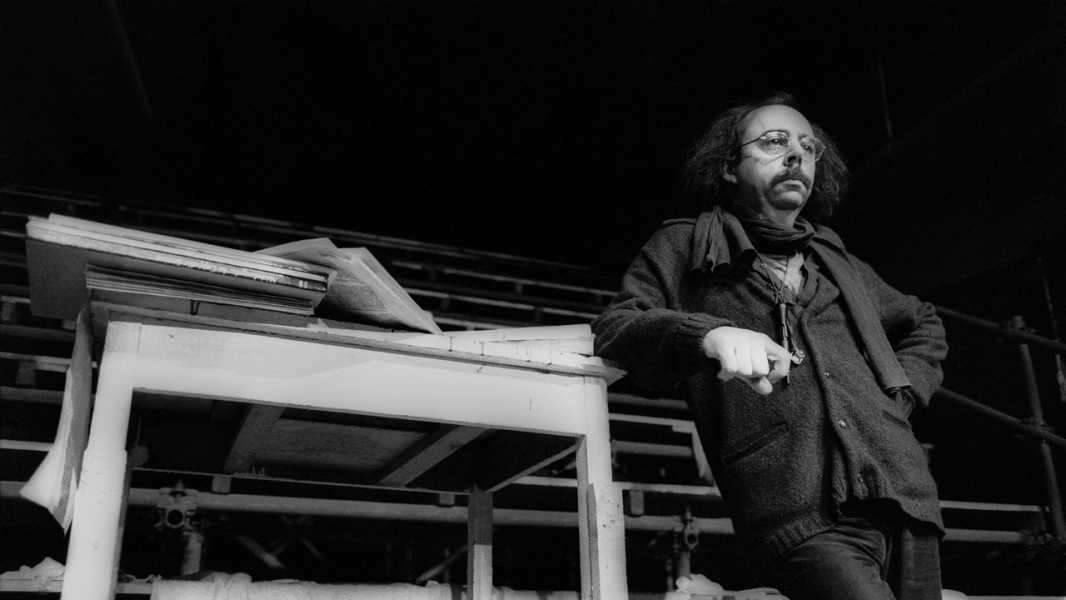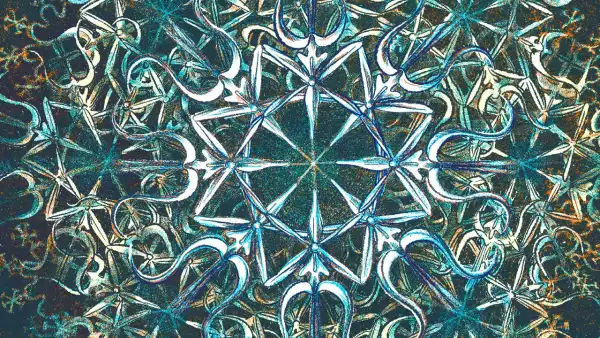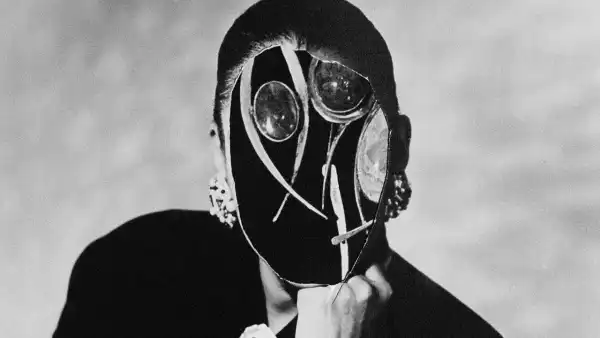
Save this storySave this storySave this storySave this story
With the death of the director Richard Foreman, at eighty-seven, on January 4th, an era came to an end. You might define that era as a time of American aesthetic swagger, when artists such as Foreman, Mabou Mines, Meredith Monk, and Robert Wilson enjoyed international attention, helping make late-twentieth-century New York a performance mecca. Or you might think of it as the era of cheap Manhattan housing, gone now, when artists could afford to pour their often unpaid labor into hugely effortful collaborative projects. Maybe you’d call it the era of downtown. But to me, and to many others, a whole half century was just . . . the era of Richard Foreman.
Foreman was one of the last living crossover theatrical eccentrics, an outsider artist whose philosophically rigorous work for downtown micro-audiences alternated with engagements at Lincoln Center and the Festival d’Automne, in Paris. He grew up in Scarsdale—he is surely Scarsdale’s most avant-garde son—and studied English at Brown and playwriting at Yale, but he found his kindred spirits among a group of outré experimental filmmakers in New York. His career began in 1968, with “Angelface,” a play he staged in Jonas Mekas’s Film-Makers’ Cinematheque, which had been closed to film projection by an unsympathetic fire department. With “Angelface,” Foreman founded the Ontological-Hysteric Theatre, a roving, lifelong project, which for some time was stationed in a long, narrow space at 491 Broadway, where he wrote, directed, designed, and often ran the sound for his time-warping Gesamtkunstwerk.
Beginning in 1992, the Ontological-Hysteric occupied an upper chamber of the beautiful St. Mark’s Church in-the-Bowery, and Foreman advertised his yearly shows there with blizzards of black-and-white posters, which were wheat-pasted all over the Village every winter. These were the size of carnival one-sheets, and full of startling clip-art imagery (a screaming head, a creepy baby in a mobcap) and aggressive block capitals, announcing the circus was back in town. Seeing a title like “WAKE UP MR. SLEEPY! YOUR UNCONSCIOUS MIND IS DEAD!”—repeated on fifteen copies of the poster on some construction siding on Bleecker Street—could certainly shock a person out of her torpor.
Inside the Ontological, it was a kind of circus, but the ring was Foreman’s mind. (This impression was exaggerated by his habitual use of black-and-white striped strings, which crisscrossed his sets, like the hawsers and tightropes inside a big tent.) The plays were dreamlike texts culled from his journals, sometimes incomprehensible, often slyly self-revelatory. The environments were gorgeous, Expressionist fun houses; characters posed in precise tableaux, while stone-faced little figures lurked at the edges of the stage, bustling in with props. The roughly seventy minutes that elapsed during each performance never felt like seventy minutes—time either froze or raced ahead or stretched like taffy. These shows looked and sounded like nothing on earth, yet they also seemed somehow familiar: they simultaneously recalled the Georges Méliès film “A Trip to the Moon,” with its slapstick scientists and simple stop-motion illusions, and George Bataille’s surreal, erotic picaresques. (Foreman adored France, and France loved Foreman; he was elected to the French Order of Arts and Letters in 2004.)
In the nineties, when I was in college and starting to think seriously about theatre, news of Foreman’s annual extravaganzas were passed person-to-person. They seemed full of unspeakable mystery, like trials of initiation that any true theatre lover must undergo. In his 1992 essay-and-play collection, “Unbalancing Acts”—also passed hand-to-hand—Foreman wrote that his work, full of blinding lights and interrupting buzzers, built new “models of consciousness . . . that might evolve into a new kind of lucidity and self-possession.” He saw his aesthetic derangements as a kind of assault that might lead to clarity. (“I’m a closet religious writer,” he said.) Beneath that ambitious claim, it seemed to me, was a deeper one: an insistence that theatre should embark on impossible tasks that could take a person a whole life to work through. He certainly persuaded me.
When I finally climbed the stairs to Ontological-Hysteric, I found that, as so many had, Foreman was actually a showman, as fond of pratfalls and dingbat comedy as he was of the obscure and erudite. But I had already missed so much: his seminal “Threepenny Opera,” for instance, as well as almost forty other pieces. Foreman’s greatest collaborator and performer, his wife Kate Manheim, who survives him, had stopped acting in the eighties. She had been his intensely questing protagonist for nearly a decade in plays like “Rhoda in Potatoland” and “Penguin Touquet,” and you can, at least, get a sense of her transfixing power in his film “Strong Medicine,” from 1981. Luckily, I did manage to see ten or so pieces, including “Maria del Bosco,” from 2002, a ballerina fantasia about sexual exhaustion, or possibly terrorism; “The Gods Are Pounding My Head! (AKA Lumberjack Messiah),” from 2005; and John Zorn’s noise opera “Astronome,” from 2009. I watched the shows, but I also watched others watching the shows: Foreman’s sets almost always featured a Plexiglas wall in front of the audience, which forced us to peer at the action through our own astonished reflection, and the director himself was visible, too, tucked away at a soundboard, triggering loud pings and various looped, booming announcements in his own distorted voice. “No magic. That’s the magic,” a godlike narrator might say, or, “Let’s all join . . . the misfit club!”
I got my true education in his work by covering it—I was allowed to watch rehearsals for “Old-Fashioned Prostitutes,” a 2013 show at the Public Theatre, and I interviewed Foreman, always slippery, who told me, “I identify with any awkwardness that you can imagine.” That education is ongoing. Thanks to the poet Charles Bernstein, you, too, can watch many of the later plays in an archive he has assembled at PennSound. The best one to start with, I think, is Henry Hills’s extraordinary 2010 film of “Astronome,” which feels like a Kabbalistic ritual sped up into a panic attack.
One measure of Foreman’s legacy might be the impact that he had on the many people who worked with him: the actors, certainly—among them, Willem Dafoe, James Urbaniak, Okwui Okpokwasili, F. Murray Abraham, Kate Valk, D. J. Mendel, David Patrick Kelly, Lili Taylor, David Greenspan, Will Patton, and Raul Julia—but also the assistants and interns and technicians and designers, who made his strange, baroque worlds take life. Many Foremanites transferred his sense of adventure and obsession into their own work, including the writer-critics Jennifer Krasinski and David Cote, the directors David Herskovits, Eric Dyer, and John Collins, and the Off Off impresarios Theresa Buchheister and Noel Allain.
Foreman, who largely retired from making live performances in 2013, may have connected us to a long-ago New York, but he never became a figure of the past. The Wooster Group revived his political satire “Symphony of Rats,” in 2024, and Foreman was coöperating with Krasinski, the artist-curator Andrew Lampert, and Dafoe on an audio artwork, based on one of his unproduced texts, which will be installed at the next Venice Theatre Biennale. His final play, “Suppose Beautiful Madeline Harvey,” published in one of the Performing Arts Journal’s last issues, was mounted by the group Object Collection in December, though it opened after Foreman had already fallen ill. He contributed growling voice-overs to that show: “Suppose . . . the scene of the action was elsewhere, no longer in human beings as such, but you know—ELSEWHERE?” The man himself was already somewhere else, and moving further away.
Last fall, I helped organize a celebration of Foreman’s work at N.Y.U.—the Richard Foreman and Kate Manheim Collection is housed at the university’s Bobst Library—in which more than a hundred of his former collaborators reunited at the Skirball. I had been warned that he might back out of participating, even at the last minute, and so our invitations hedged a bit about his presence. I hoped he would come; I didn’t think he would come; he came.
In the course of the event, Wallace Shawn (who had his first-ever film role as a nonspeaking party extra in Foreman’s eerie “Strong Medicine”) read an encomium to Foreman’s productions, a “replica,” he said, “of human consciousness.” Robert Wilson sent a video about their artistic kinship. And the writer and choreographer Annie-B Parson spoke about Foreman’s capacity for creating movement, generating huge energies just by letting actors be slightly out of synch. Several actors spoke about the rigors of working with the maestro; the elegant Juliana Francis Kelly remembered a piece of direction that Foreman had, according to legend, given to an actor in prop glasses: “Less Magoo . . . more Magritte.”
Foreman sat onstage, in a wheelchair, as various people came up and said hello. From a distance, he seemed very frail, his beard long and wispy, his attention wandering. But when he began to speak—first with his interlocutor, the curator Jay Sanders, and then in a rambunctious question-and-answer session with the crowd—the old mischief emerged, full force. (You can see a video of this conversation here.) When he hectored the Skirball’s lighting team, you could hear snickers from his ex-technicians, who had heard it all before.
“Your work has affected a lot of theatre artists,” F. Murray Abraham observed, from the audience. “Does that give you any sense of satisfaction?” There was a pause. “Not really, not . . . really,” Foreman said, and the crowd laughed in delight. He spoke about his fondness for the tense, pregnant moment before a bullfight, when the toreadors walk out into the ring in a precise pattern to a little piece of music, which he sang. He would have explained more to us about ritual and tension and life and death, but then he realized he needed to get home, to get to bed. He brought the microphone near and thanked the audience. “Now for the second half,” he intoned, mock-seriously. But then he laughed, and waved the microphone away. “That’s enough,” he said. But of course it wasn’t.♦
Sourse: newyorker.com






